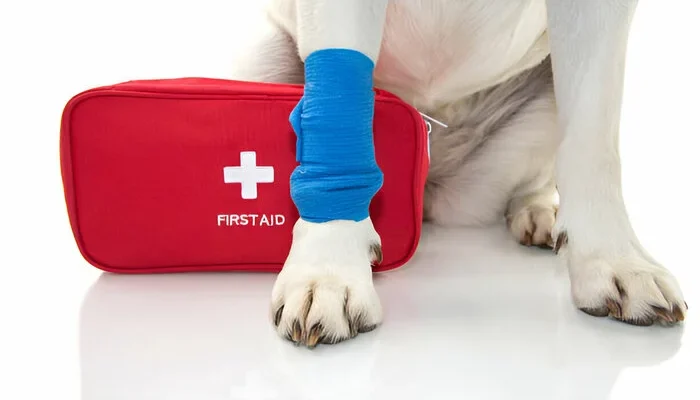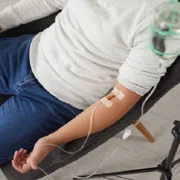As a caring pet owner, your dog’s health and well-being are very important. Accidents or illnesses can happen suddenly. While getting help from a vet is important, knowing some first aid can really help you handle the situation until help comes. We will go over simple first aid tips for dog owners so you are ready to handle common situations.
Understanding Basic Dog First Aid
The key to pet first aid is knowing when your dog needs immediate help. Getting to know your dog’s usual behavior, heartbeat, breathing rate, and body temperature can help you notice if something is wrong. These vital signs are important because they serve as a starting point during a medical emergency. It’s smart to have a first aid kit ready that is specific to your dog’s needs, including relevant dog accessories that can assist in a crisis.
Common First Aid Scenarios
One common emergency that dog owners often face is harm. Wounds from an accident or a fight with another animal need to be treated right away. Start by relaxing your dog to avoid making it more stressed. Use clean gauze to gently press on a bleeding wound. This can help stop the bleeding until you can get to a doctor. Remember, dogs that are hurting might bite, so be careful.
If you have an injury, it’s important to keep it still. Use a brief splint to keep the hurt area stable, but don’t try to move it in a way that might make the injury worse. Make sure to keep your pet warm and secure while taking them to the vet to avoid shocking them.
Poisoning is another situation that needs quick help. If you think your dog has eaten something harmful, don’t make them vomit unless a doctor tells you to. Act quickly and gather any materials connected to the event, like the package of what was consumed, and share this information with the vet.
Heatstroke and Hypothermia
Very high temperatures in summer can cause heatstroke, while extremely low temperatures in winter can lead to dehydration. Signs of heatstroke include fast breathing, sweating, and tiredness. If you think your dog has heatstroke, quickly take them to a cooler spot, give them small sips of water, and use cool (not cold) water on their body, especially on their neck and paw pads. On the other hand, if your dog has hypothermia, which shows through shaking and weakness, you should warm them up slowly with blankets and get professional help.
Choking Hazards
Dogs are curious animals, and they can easily choke on things that are unsafe. If your dog is choking, it may show signs like scratching at its mouth, coughing, and having gums that look blue. Be careful when approaching a dog that is choking, as it might bite out of fear. If you can see the object, carefully try to take it out if it’s safe. If not, get ready to go to the vet quickly. To prevent this, keep small items and some dog accessories out of reach.
Training for Emergencies
Effective response in a crisis can be enhanced by proper training. Basic obedience training is a start, but in critical situations, having specific training aids like dog training collars can prove beneficial for managing your dog. A dog that responds immediately to commands can prevent further injury or help you address the situation more effectively.
Preventive Measures and Regular Health Checks
It’s better to prevent health issues than to treat them, especially when it comes to your pet’s health. Regular exercise, a healthy diet, and routine vet check-ups can help lower the chances of accidents for your dog. It’s important to know about possible dangers in your home and surroundings to help avoid problems.
Using the right dog training collars and keeping your dog active can help keep them healthy and avoid injuries caused by being out of shape or overweight. Staying up to date with shots and preventing parasites can help stop many diseases and health problems before they start.
Creating a Dog First Aid Kit
A personalized first aid kit is very useful in emergencies with pets. Important things are bandages, tape, scissors, tweezers, a thermometer, and antiseptic. Additionally, customizing the kit to meet your dog’s health needs and adding useful dog items can be helpful. Keep a list of emergency contact numbers, including your usual doctor and the closest animal hospital, easily available.
The Role of Professional Veterinary Care
First aid is important in an emergency, but it cannot replace professional veterinarian care. After giving first aid, it’s very important to take your dog to the vet quickly for a full check-up and treatment. A vet will make sure your dog gets the best care and heals quickly.
Conclusion
First aid information helps dog owners act quickly in emergencies, which can save their pet’s life. By making a special first aid kit, taking preventive steps, and using the right dog training bands, pet owners can better protect their dogs. Keep in mind that first aid is the quick care you give right away. It’s important to follow up with a Dog Master or another vet to ensure your pet stays healthy and happy.
Take time to learn about pet first aid. This will help you keep your pet safe and healthy for a long time.
Revive Fitness Routine with These Proven Tips










Comments